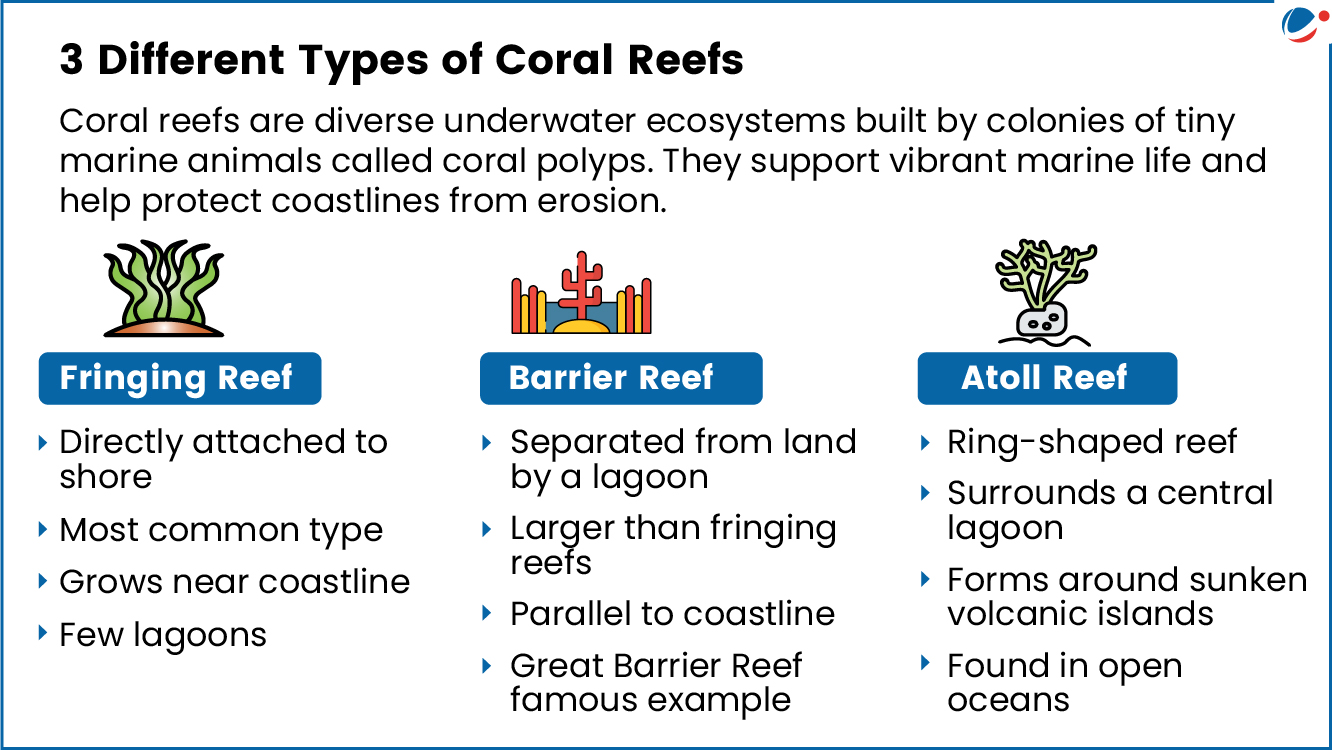The coral bleaching event is marked by longest, largest and most intense marine heatwave across the West Coast.
- Ningaloo Reef (World Heritage site) on Australia's West coast has suffered from major coral bleaching in recent years.
- The bleaching is part of the ongoing fourth mass coral bleaching event announced by the NOAA in 2024.
- Additionally, The Great Barrier Reef – the world's largest coral system stretching over 2,300km on East Coast of Australia has also experienced its biggest decline in coral in four decades.

About Corals
- Corals are organisms that have a symbiotic relationship with microscopic algae (zooxanthellae) living in their tissues, which serve as their primary food source and give them color.
Coral Bleaching
- Corals become bleached when they are stressed by changes in conditions such as temperature, light, or nutrients.
- They expel the symbiotic algae (zooxanthellae) living in their tissues, causing them to turn completely white.
- This also removes their primary food source.
Ideal Conditions for Coral Survival
- Clean Water: Essential for coral health, free from polluted runoff that can harm corals or block sunlight needed by their symbiotic algae.
- Warm Water: Most reef-building hard corals prefer water temperatures between 23° and 29° Celsius.
- Healthy Wildlife Populations: Herbivores like parrotfish and sea turtles are vital for grazing on algae.






